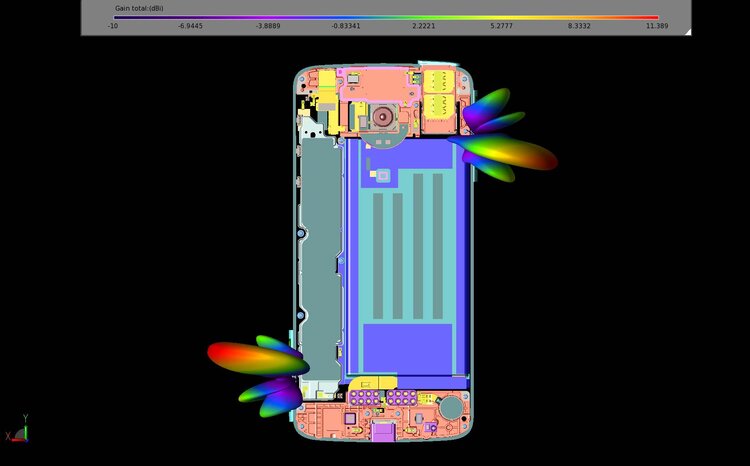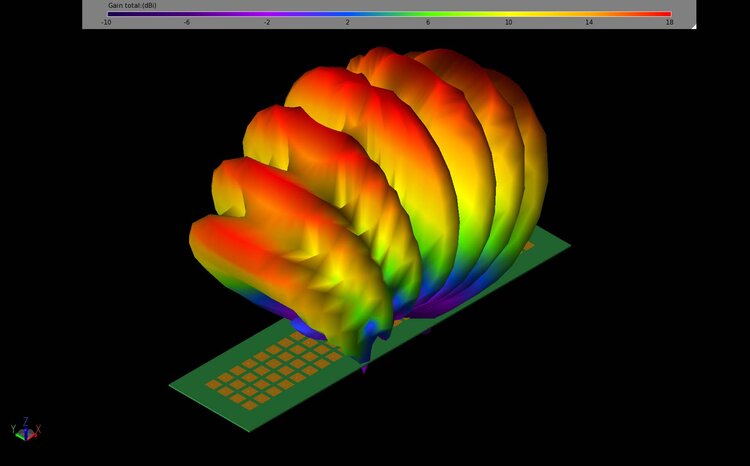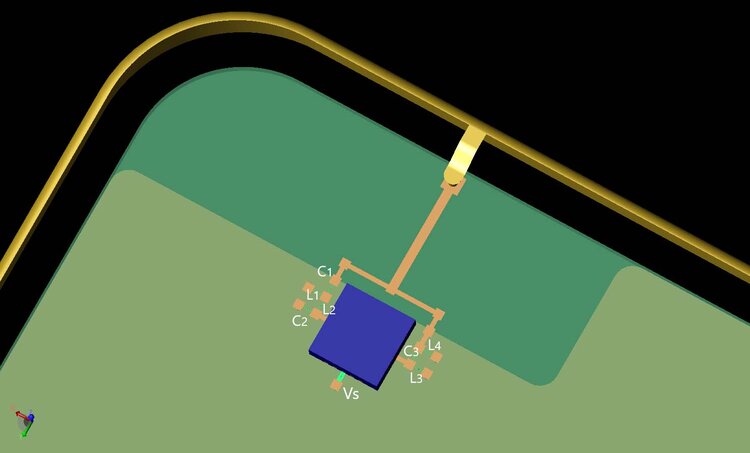Antenna Simulation Software For Antenna Design And Analysis
Antenna simulation software provides engineers with powerful tools to shorten development time and release products to market sooner.
Antennas are ubiquitous in today’s technology and span the spectrum from low frequency, to microwaves, to terahertz and beyond. Our XFdtd 3D Electromagnetic Simulation Software is a full-wave solver based on the Finite-Difference Time-Domain (FDTD) method and is well-suited for analyzing designs ranging from simple dipoles and patches to the latest mobile devices consisting of hundreds of components and multiple antennas. The advanced processing features in XFdtd are also capable of handling fifth generation cellular standards at millimeter wave frequencies that involve antenna arrays and more complex processing.

Broad Spectrum of Antenna Analysis Applications
Antenna engineers have long used EM software for optimizing designs virtually, reducing the expense and time of fabricating hardware prototypes while rapidly evaluating numerous device configurations. The vast simulation space covered by XFdtd encompasses traditional antenna designs such as wire antennas, microstrip patches, and horns, as well as newer technologies such as 5G antenna arrays at millimeter wave frequencies, Internet-of-Things (IoT) devices such as smart speakers and cameras, and cutting-edge, next-generation 6G antennas in the terahertz range and beyond. XFdtd simulations are capable of analyzing very complex devices efficiently and are not limited by any computational barriers; projects spanning over 500 cubic wavelengths are possible. Learn more about XFdtd’s High Performance Computing Options for EM simulations.

Straightforward Analysis Process
Sophisticated device designs can be created in XFdtd using a full-featured CAD modeler or imported files in many standard formats. Virtually all aspects of a project may be parameterized, allowing for rapid characterization of design variables. Simulated devices may be excited by an assortment of input options, such as point source voltages and currents or distributed sources including a variety of waveguide ports. Gain, efficiency, impedance, S-parameters, and dissipated power are all common output quantities that are generated. Data specific to the interaction of fields with biological tissues is also available such as Specific Absorption Rate (SAR) and Power Density distributions.
Advanced Post Processing Options
State-of-the-art analysis tools must go beyond traditional results to handle the needs of IoT/Connected Home, 5G, and upcoming 6G devices. Antenna array analysis tools that can rapidly process data to define and optimize the performance of complex beamforming systems containing hundreds or more elements are essential. Understanding the full coverage of a gain pattern using advanced processing techniques like the cumulative distribution function of the effective isotropic radiated power (CDF of EIRP) is critical for antenna designers, and XFdtd meets this need. In addition, for many communication systems employing Multiple-Input Multiple-Output (MIMO), including cellular base stations and WiFi hubs, the interactions between elements is crucial. The MIMO tools in XFdtd can compute quantities such as isolation and envelope cross correlation, which ensure proper operation.

Antenna Matching Circuit Design and Optimization Included
The days of designing and tuning an antenna for a single frequency are over as current devices have to connect efficiently on multiple bands through the use of matching circuits. XFdtd has sophisticated tools available for matching circuit analysis, including the Circuit Element Optimizer (CEO), which can tune antennas for multiple bands while including the electromagnetic effects of the structure surrounding the circuit; this is especially important for cellular phone designers. More complex circuits can be included with circuit co-simulation, which runs parallel FDTD and circuit solvers together to include the effects of chip components from common manufacturers or multi-port matching networks using SPICE models. XFdtd also includes integration with the matching circuit design software Optenni Lab, which can determine the optimal matching network topology.

